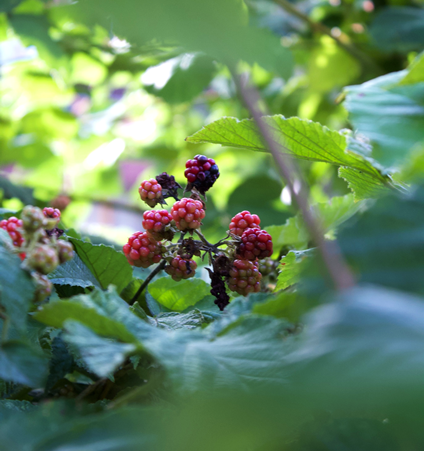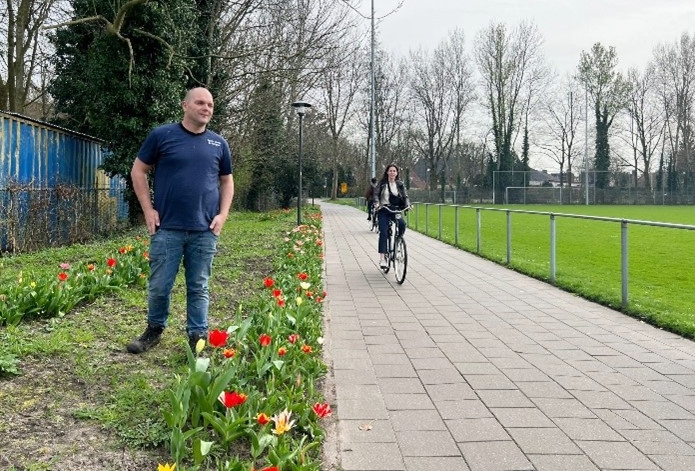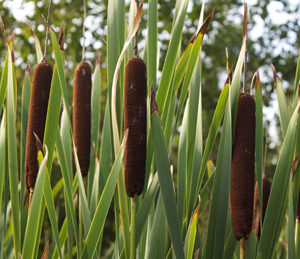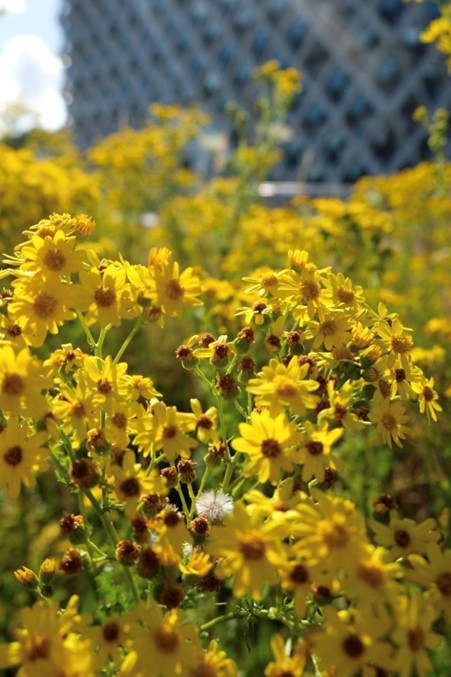Local name: English: Himalayan blackberry/ bramble; Dutch: Dijkviltbraam.
Scientific name: Rubus armeniacus
Flowering time: late summer to late autumn
Location on campus: Next to Gaia/Lumen entrance
‘I’m sure almost everyone recognises this species as a bramble and appreciates the tasty berries it produces, but not many know that it is actually exotic and invasive. This huge plant was just a tiny spot 2-3 years ago.
The Himalayan blackberry was brought to the Netherlands because of its large, sweet fruits. What one might think of as a single berry is in-fact a bunch of aggregated berries. You can recognize this species from the huge stands and the almost-white underside of the leaves. It grows naturally in a hedge shape and inside the hedge, dry and dead branches and leaves accumulate. This is especially risky during wild fires because the long hedges of dry material provide a path for fires to spread across the landscape.’
What one might think of as a single berry is in-fact a bunch of aggregated berries
‘Apart from this exotic bramble species, there are actually around 200 Rubus species which are native to the Netherlands. Interestingly, only three of these are strictly sexually reproducing. The others are what is known as apomictic. This means that the plant forms seeds without combining DNA from both parents; the descendant plant is actually a clone of the mother plant. Chance genetic mutations which occur are passed down to following generations and this way a new species begins deviate from another. Although sometimes difficult to differentiate, around fifty of these apomictic species are now listed as part of the Dutch Flora in the Heukels Flora van Nederland. This has caused increased interest and conservation efforts for these plants. For a more detailed look at all the species on offer in the Netherlands, explore the work of Wageningen’s Rense Haveman in their PhD Thesis Concealed Diversity, which is available in the Wageningen library (online). His study takes a fascinating and philosophical approach on the concept of what makes a species a species.’
Text and photo Julia van der Westhuyzen | story Joop Schaminée

 Himalayan blackberry. Photo Julia van der Westhuyzen
Himalayan blackberry. Photo Julia van der Westhuyzen 

